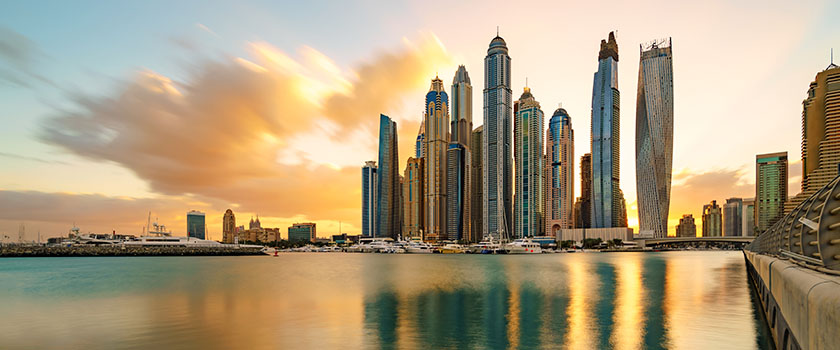Even though Asian economies have not endorsed sanctions, the Russia–Ukraine conflict will still have major impacts on the macroeconomic backdrop in the region.
Key takeaways
- The Russia-Ukraine conflict will result in shocks to global supply chains. This sent commodity prices soaring, led by crude oil and natural gas. As a result, we expect inflation in Asia to increase by 1.0% in 2022.
- Although China, Japan, Korea and India are the largest importers in the region, they are not the most impacted. In relative terms, the impact will be felt more strongly in Korea, Singapore, Hong Kong and Thailand. On the flip side, Australia and Indonesia are net beneficiaries of high energy prices in Asia.
- Developed markets like South Korea, Australia, New Zealand and Singapore are ahead of the curve in terms of tapering. Emerging markets like India, Philippines, Malaysia, Thailand and even Indonesia will have to start tapering in Q2-22, potentially impacting the nascent economic recovery.
Russia-Ukraine conflict to have major impact on inflation
After months of heightened tensions between the Ukraine and Russia, the situation reached a turning point on February 22. Russian President Vladimir Putin signed a decree recognising the independence of Luhansk and Donetsk, paving the way for the invasion of Ukraine on February 24. United States (US) President Joe Biden announced wide ranging sanctions on Russia's sovereign debt, companies, individuals and energy exports. Australia, the European Union (EU), Japan, Taiwan and the United Kingdom (UK) also announced comparable sanctions, amongst others. Some Russian banks are banned from accessing SWIFT, while Russia’s central bank assets have been frozen and sanctioned. Meanwhile, Germany halted the Nord Stream 2 gas pipeline. The pipeline was expected to deliver 55 billion metric tonnes of gas per year to Europe and cost USD 11 billion to build, USD 5.5 billion of which was financed by Russia. The measures aim to isolate and undermine the Russian economy, restrict Russian companies from accessing technology and blocking Russian financial institutions from global financial markets.
Asian economies that didn’t endorse sanctions, China and India being the largest ones, will still need to comply with sanctions, or they may risk jeopardising their own access to the USD denominated international financial system.
This resulted in a remarkable increase in global risk-off sentiment and a sell-off in global equities. The yield on US 10Y notes has declined markedly to 1.85%, before recovering to 1.95%, while the MSCI World Index is down approximately -12% YTD. In the meantime, commodities and other asset classes considered as safe havens soared. This is understandable as Russia is one of the world's largest exporters of raw materials, including: nickel (49% of global exports), palladium (42%), crude oil (40%), diamonds (33%), aluminium (26%), natural gas (20%), platinum (13%), steel (7%) and copper (4%). Russia and Ukraine also export large amounts of wheat (30%) and corn (15%). Moreover, Ukraine is an important producer of neon gas (65% of global exports), which is used in the manufacturing of semiconductors and electric vehicles.
The blockade of Russia’s economy will therefore imply shocks to global supply chains. Many commodity prices are in backwardation, a situation whereby the current price of an underlying asset is higher than prices trading in the futures market. Although we expect that the dust will settle in global financial markets, it remains unclear how long it will take before commodity prices decline. This is because supply imbalances can be quite sticky in global commodity value chains. For example, oil prices are largely determined by political and economic factors, like whether the Organization of the Petroleum Exporting Countries (OPEC) agrees to ramp up supply. On the other hand, it may take upwards of five years to increase production capacity for metals such as nickel, where supply chains are capital intensive and restricted by geographical factors. The situation in Ukraine will evolve in the coming months but it is safe to assume that prices will remain higher longer, with energy prices remaining in focus.
Who is most at risk in Asia?
Asia will be impacted via three main channels:
- Risk sentiment: Global risk aversion will have negative implications for Emerging Market (EM) asset classes, including in Asia. The timing of the events in Ukraine is quite perilous, as it coincides with the start of the US Federal Reserve’s tapering in March. Compounded with upside pressures on US long-term yields, those conditions have historically implied portfolio outflows from Asia.
- Trade with Russia: Excluding China and South Korea, most Asian economies do not have sizeable trade relations with Russia. China’s trade with Russia was worth only 1.0% of GDP, with South Korea being slightly higher at 1.7%. In terms of sectors, oil and gas are by far the largest items that Asian economies import from Russia. However, the indirect impact via supply chains may be significant and hard to quantify.
- Rising inflation expectations: This is the most significant channel through which the Russia-Ukraine conflict will impact Asia. We expect that sanctions on Russian exports will exert appreciatory pressures on global energy and other commodity prices and by result in higher imported inflation in Asia.
The last point should not be underestimated. Four out of the world’s top-5 largest energy importers are in Asia. As a result, investors will be monitoring global energy prices very closely. However, not all economies in Asia will be impacted equally. Investors should avoid extrapolating trade volumes to mean higher exposure to rising prices. For example, the largest importers of natural gas in the world are China, Japan, South Korea and India. However, imports of natural gas as percentage of GDP show a very different picture. To evaluate this, we looked at natural gas imports in 2020 using UN COMTRADE figures and compared them to GDP figures from the world bank.
Although China, Japan, Korea and India are the largest importers in Asia, they are not the most impacted. Relative to GDP, the impact will be felt more strongly in Korea (1.2% of GDP), Singapore (0.9%), Pakistan (0.9%) and Thailand (0.8%). An even better measure is net energy imports as a percentage of total energy use – a positive reading denotes net energy importers, while a negative reading denotes net energy exporters. According to this measure, Hong Kong (99% of net energy use), Singapore (98%), South Korea (82%) and Thailand (42%) are most exposed to rising energy prices. However, the indicator is useful as it identifies the energy exporters, which should stand to benefit from an environment of rising energy prices.
That’s not to say that the impact on other economies in Asia will be negligible. For example, India is still dependent on energy imports to meet 34% of its domestic demand. However, India has a big economy and food weighs heavily on inflation. Likewise, China possesses a rich endowment of coal reserves but still relies on imports of energy products to meet 15% of its domestic demand. However, these account for less than 0.5% of its GDP, so the impact should be manageable. Lastly, rising energy prices may not be bad news for everybody. Australia and Indonesia are large net energy exporters that will be beneficiaries from an environment of rising energy prices.
Implications for investors
The Consumer Price Index (CPI) remains below its 10-year average when measured on a GDP-weighted basis. However, we expect that the Russia-Ukraine conflict will lead to a 1.00% increase in inflation in 2022 via higher commodity prices. That means that the GDP-weighted CPI index will likely exceed 3.00% in 2022. At that level, many Central banks will be pushed to hike rates sooner-thanexpected. DMs like South Korea, Australia, New Zealand and Singapore are ahead of the curve in terms of tapering. However, EMs that had hoped to sustain the dovish pause in 2022 will find that it is no longer possible. In other words, central banks in India, Philippines, Malaysia, Thailand and even Indonesia will hike rates by 25-50 bps starting in Q2-22, which could have implications for the nascent economic recovery in these economies.
As a result, we expect the macroeconomic backdrop to remain challenging in H1-22, before easing in H2-22. In addition to tighter liquidity, Asian markets will have to contend with weaker demand stemming from higher prices and disruptions to supply chains. Although China, Japan, Korea and India are the largest importers in Asia, they are not the most impacted. In relative terms, the impact will be felt more strongly in Korea, Singapore, Hong Kong and Thailand. Logically, this is something that will be reflected in the markets. Currencies like the AUD and the CNH are performing better than the KRW or the INR.
Against this backdrop, it will be important for investors to do three things:
- de-risk by remaining focused on high-quality earnings;
- diversify into commodities and other asset classes that benefit from rising inflation; and
- defend against potential downside risks through asymmetric positions and alternative structures.








